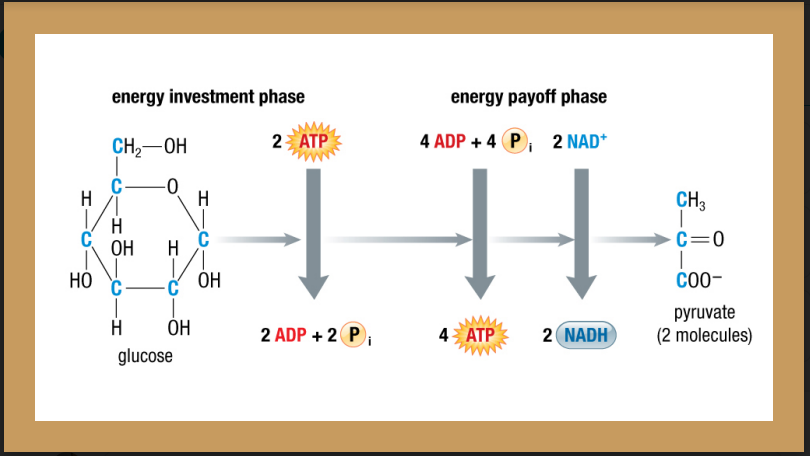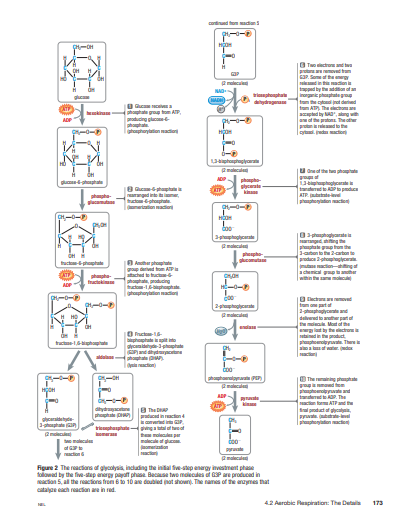
4.2 Glycolysis
Oldest reaction
Prokaryotes and Eukaryotes
does not require oxygen
in cytosol
10 reactions that oxidized glucose into 2 pyruvates
Energy is released is used to synthesize ATP and NADH
2 Phases
Energy Investment
5 steps
Consumes 2 ATP
ENDERGONIC
Energy Payoff
5 steps
Yields 4 ATP and 2 NADH (gonna be worth 6 ATP later)
EXERGONIC

Efficiency of Glycolysis:
1 mole of ATP stores 31 kJ of energy
Each mole of glucose yields 2 moles of ATP from glycolysis (62 kJ)
1 mole of glucose, when completely oxidized, releases 2870 kJ
Efficiency = 62kJ/2870kJ x 100% = 2.2%
The pyruvates have lower energy than the one glucose due to oxidization
Remaining energy is stored in pyruvate and NADH, or lost as heat.
Though the percentage return for glycolysis is low, some organisms use glycolysis as their primary source of energy. For aerobic organisms, however, this is just the beginning process.

4.2 Glycolysis
Oldest reaction
Prokaryotes and Eukaryotes
does not require oxygen
in cytosol
10 reactions that oxidized glucose into 2 pyruvates
Energy is released is used to synthesize ATP and NADH
2 Phases
Energy Investment
5 steps
Consumes 2 ATP
ENDERGONIC
Energy Payoff
5 steps
Yields 4 ATP and 2 NADH (gonna be worth 6 ATP later)
EXERGONIC

Efficiency of Glycolysis:
1 mole of ATP stores 31 kJ of energy
Each mole of glucose yields 2 moles of ATP from glycolysis (62 kJ)
1 mole of glucose, when completely oxidized, releases 2870 kJ
Efficiency = 62kJ/2870kJ x 100% = 2.2%
The pyruvates have lower energy than the one glucose due to oxidization
Remaining energy is stored in pyruvate and NADH, or lost as heat.
Though the percentage return for glycolysis is low, some organisms use glycolysis as their primary source of energy. For aerobic organisms, however, this is just the beginning process.

 Knowt
Knowt